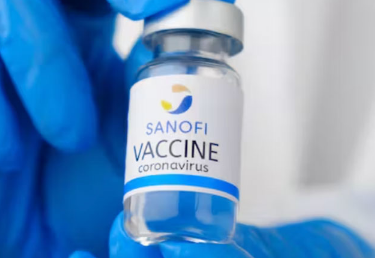Sanofi’s vaccine is being administered as part of the spring 2023 booster campaign. An authority on immunology explains how it operates.
A spring booster program has just started in the UK, delivering an extra vaccination to those who are most at risk for COVID. individuals over the age of 75, individuals living in nursing homes, persons in children’s and adult’s homes, and people with compromised immune systems will all be encouraged to have their next vaccination between April and June 2023.
This will be some people’s sixth dose overall. This is a logical precaution to help safeguard the most susceptible against major disease, hospitalization, and death should they get the virus, however, as immunity from COVID vaccinations starts to diminish in the months afterward.
The upgraded bivalent vaccinations from Pfizer and Moderna—which target omicron alongside the original COVID strain—as well as another vaccine produced by Sanofi—will be used in the UK during this vaccination campaign.
At the end of 2022, the Sanofi vaccine received approval for use in the UK and the EU. The UK has approved a COVID vaccine for the seventh time.
The mRNA-based vaccines developed by Pfizer and Moderna have received a lot of attention over the past couple of years. With hundreds of millions of doses provided, they have dominated the COVID immunization effort, particularly in high-income nations. The Sanofi booster, however, is based on a unique vaccination technology that has never been employed in a COVID booster campaign in the UK. How effective is this shot, and what is it?

A vaccination made of proteins
The mRNA found in the Pfizer and Moderna vaccines is a little strand of genetic material that gives our cells the instructions they need to produce proteins. The spike protein that covers the surface of SARS-CoV-2 (the virus that causes COVID) and aids in its attachment to and infection of our cells is made by our cells under the safe direction of the mRNA. This honed our immune systems to identify and eradicate SARS-CoV-2 should we come into contact with it.
The Sanofi vaccine, VidPrevtyn Beta, is protein-based and substitutes copies of the beta variant’s SARS-CoV-2 spike protein. This variant was discovered for the first time in South Africa, and in December 2020 it was labeled as a variant of concern.
The Sanofi vaccine therefore already has copies of the spike protein instead of telling our cells to generate them, as the mRNA vaccines do. The approach may be different, but the end result is largely the same: it trains our immune systems to identify and destroy SARS-CoV-2.
The Sanofi vaccine also includes an additional component known as an adjuvant, which boosts our immune system and increases the vaccination’s effectiveness.
A vaccination of this kind is not a novel concept. For many years, it has been safe to employ a number of protein-based vaccines to give protection against the tetanus toxin as well as viral illnesses such hepatitis B, the human papillomavirus, influenza, and shingles.
